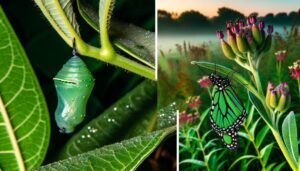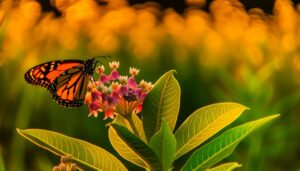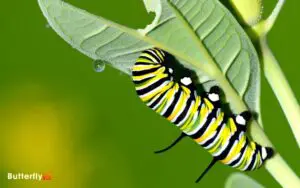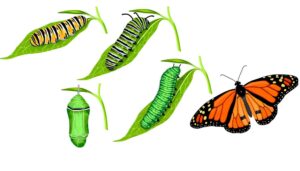Monarch Butterflies in Pacific Grove: Discover Their Journey!
You’ll find the monarch butterflies clustering in Pacific Grove‘s Monarch Sanctuary, an essential overwintering site marked by scientific and community-led conservation.
These monarchs, guided by navigational genetics and environmental cues, travel up to 3,000 miles to reach this site. Pacific Grove’s microclimate and native eucalyptus and Monterey pine trees offer the perfect conditions.
Conservation efforts involve habitat restoration, detailed population studies, and local laws protecting these overwintering areas.
Community engagement through citizen science and educational programs also plays a key role. To uncover more about Pacific Grove’s unique role in monarch preservation, there’s much more to explore.

Key Takeaways
Monarch Butterfly Migration
Monarch butterfly migration is an extraordinary phenomenon where millions of these insects travel up to 3,000 miles from North America to their wintering grounds in Mexico and California.
During this journey, you’ll observe that Monarchs rely on environmental cues like the angle of sunlight and temperature changes to navigate. Their complex migratory patterns are genetically programmed, a concept known as navigational genetics.
Researchers have found that Monarchs use a combination of circadian rhythms and magnetic fields to chart their course. These butterflies are also known to utilize specific stopping points, or waystations, for resting and refueling on nectar.
Pacific Grove’s Unique Role
You’ll find that Pacific Grove plays a critical role in monarch migration patterns, serving as a key overwintering site.
Conservation efforts in the Monarch Sanctuary aim to protect these habitats, utilizing scientific research to guide actions.
Community initiatives bolster these efforts, involving local residents in monitoring and preserving the butterfly population.
Monarch Migration Patterns
Due to its unique microclimate, Pacific Grove serves as a critical overwintering site for monarch butterflies during their annual migration.
You’ll find that the mild temperatures and coastal humidity provide an ideal environment for monarchs to conserve energy. Research shows these butterflies travel up to 3,000 miles from as far as Canada to reach this sanctuary.
They cluster in eucalyptus and Monterey pine trees, taking advantage of the microclimate to survive the winter months.
You might observe that monarchs use the sun’s position and geomagnetic cues for navigation, a behavior supported by scientific studies.
By late October, thousands of monarchs arrive in Pacific Grove, creating a spectacular display. This migratory pattern underscores the significance of Pacific Grove’s unique environmental conditions.
Sanctuary Conservation Efforts
Recognizing the importance of this migratory phenomenon, Pacific Grove has implemented rigorous conservation efforts to protect the monarch butterfly’s overwintering habitat.
You’ll find that these efforts include scientific monitoring, habitat restoration, and policy enforcement. Researchers meticulously document butterfly populations, providing critical data to track trends and identify threats.
Restoration projects focus on planting native flora and removing invasive species, ensuring ideal conditions for monarchs. Strict local ordinances protect these areas from human interference and development, safeguarding this crucial habitat.
- Scientific Monitoring: Detailed population studies and data collection.
- Habitat Restoration: Planting native species and eliminating invasive plants.
- Policy Enforcement: Local laws to preserve overwintering sites and limit human activity.
These measures underscore Pacific Grove’s unique role in monarch conservation.
Community Involvement Initiatives
Community involvement initiatives in Pacific Grove play a critical role in supporting monarch butterfly conservation.
Through educational programs, citizen science projects, and volunteer-driven habitat maintenance, individuals can actively contribute to protecting these iconic creatures.
You can participate in workshops that teach you about monarch biology and migration patterns. These educational sessions provide you with the knowledge needed to identify and protect essential habitats.
Citizen science projects invite you to collect data on monarch populations, contributing to long-term research and monitoring efforts. By joining volunteer-driven habitat maintenance activities, you’ll help plant native milkweed and nectar plants, essential for monarch survival.
Your engagement guarantees that Pacific Grove remains an important sanctuary for these butterflies, demonstrating how community action can directly impact ecological preservation.
Life Cycle of Monarchs
The life cycle of monarch butterflies is characterized by distinct stages of egg, larva, pupa, and adult. This process showcases their complex metamorphosis and remarkable migratory behavior.
You’ll first observe the tiny, white eggs laid on milkweed plants. Within a few days, they hatch into larvae, or caterpillars, which voraciously consume milkweed leaves.
After growing through several instar stages, the caterpillar forms a chrysalis, entering the pupa stage. Inside the chrysalis, remarkable cellular reorganization occurs, culminating in the emergence of an adult butterfly.
Understanding these stages is essential for appreciating the monarch’s life.
Migration Routes and Distances
You’ll find that monarch butterflies undertake remarkable long-distance journeys, spanning thousands of miles from North America to central Mexico.
Research highlights their reliance on key stopover locations such as coastal California, where they rest and refuel.
These migratory patterns are influenced by environmental cues and genetic predispositions, ensuring the monarchs’ survival across generations.
Long-distance Journey Patterns
When examining monarch butterflies’ impressive migratory feats, it becomes evident that their journey to Pacific Grove spans thousands of miles, with distinct routes that vary by regional populations.
You can observe that these butterflies exhibit remarkable navigational precision. They utilize environmental cues like the sun’s position and Earth’s magnetic field to guide their path.
Here are some key points to ponder:
- Multi-generational Migration: This journey requires multiple generations, with each generation covering a segment of the distance.
- Flight Altitudes: Monarchs fly at varying altitudes, often adjusting based on wind patterns and temperature gradients.
- Speed and Duration: Monarchs can travel up to 100 miles a day, with the entire migration taking several months.
Understanding these patterns deepens our appreciation of their incredible voyage.
Key Stopover Locations
As monarch butterflies begin their journey to Pacific Grove, they rely on key stopover locations like milkweed-rich fields and forested areas to rest and refuel. These habitats provide essential nectar sources and shelter from predators.
Research indicates that during migration, monarchs cover distances up to 3,000 miles, making periodic stops critical for their survival.
You’ll find that milkweed plants are particularly important since they serve as the primary food source for monarch larvae and provide energy-rich nectar for adults.
Forested groves offer a microclimate that protects them from harsh weather. By studying these migratory routes and stopover points, scientists aim to enhance conservation efforts, ensuring monarchs reach their wintering grounds in Pacific Grove successfully.
Conservation Efforts in Pacific Grove
Pacific Grove’s conservation initiatives for monarch butterflies incorporate habitat restoration and community education to bolster the declining population.
You’ll find that local efforts focus on planting native milkweed and nectar plants to create sustainable habitats. These plants are essential for the monarchs’ life cycle, providing necessary nourishment and breeding grounds.
Educational programs engage residents in understanding the ecological significance of these butterflies and how to aid in conservation.
- Native Plant Cultivation: Encourages residents to grow milkweed and nectar sources.
- Monarch Sanctuary Management: Maintains ideal conditions in dedicated sanctuaries.
- Citizen Science Projects: Involves community members in tracking and reporting monarch sightings and health.
These measures are scientifically designed to address the multifaceted challenges monarchs face.
Viewing Tips for Visitors
To maximize your chances of observing monarch butterflies, visit Pacific Grove during their peak migration periods in late October to early March.
Timing is essential; monarchs require mild temperatures to cluster in the eucalyptus trees. Arrive early in the morning when butterflies are less active and easier to spot.
Here’s a quick reference table to enhance your viewing experience:
| Time of Day | Activity Level | Best Viewing Tips |
|---|---|---|
| Early Morning | Low | Bring binoculars |
| Mid-Morning | Moderate | Look for sunlit areas |
| Noon | High | Observe feeding |
| Afternoon | Moderate | Check tree clusters |
| Evening | Low | Spot roosting locations |
Community Involvement
Participating in community-led conservation efforts greatly enhances the survival rates of monarch butterflies in the region.
You can actively contribute by engaging in habitat restoration, planting milkweed and nectar-rich flowers, and educating others about the importance of these efforts.
Research indicates that community involvement leads to higher survival rates for monarchs due to increased habitat suitability and resource availability.
- Habitat Restoration: Removing invasive species and planting native flora to provide essential resources.
- Milkweed Planting: Ensuring monarchs have the necessary plants for laying eggs and caterpillar sustenance.
- Education and Outreach: Spreading awareness about the ecological significance of monarchs and best practices for their conservation.
These actions, supported by scientific research, profoundly impact monarch butterfly conservation in Pacific Grove.
Future of Monarchs in Pacific Grove
Looking ahead, the future of monarch butterflies in Pacific Grove hinges on sustained conservation efforts and adaptive management strategies informed by ongoing scientific research.
You’ll need to focus on habitat restoration, milkweed planting, and reducing pesticide use.
Data from tagging and migration studies will inform intervention strategies. Monitoring population dynamics is essential to understanding fluctuations and guiding conservation policies.
Climate change impacts, such as altered migration patterns and breeding cycles, necessitate responsive actions. Engage in community science initiatives to collect valuable data. Collaboration with local, regional, and national organizations can amplify these efforts.
Conclusion
To sum up, you’re witnessing a natural marvel as monarch butterflies grace Pacific Grove. Their intricate life cycle and arduous migration are awe-inspiring, akin to nature’s clockwork.
Conservation efforts here are critical, ensuring these delicate creatures continue their journey. When you visit, remember you’re part of a larger community dedicated to their preservation.
Let’s keep the flame of hope alive for the future of monarchs in Pacific Grove, preserving this spectacle for generations to come.






